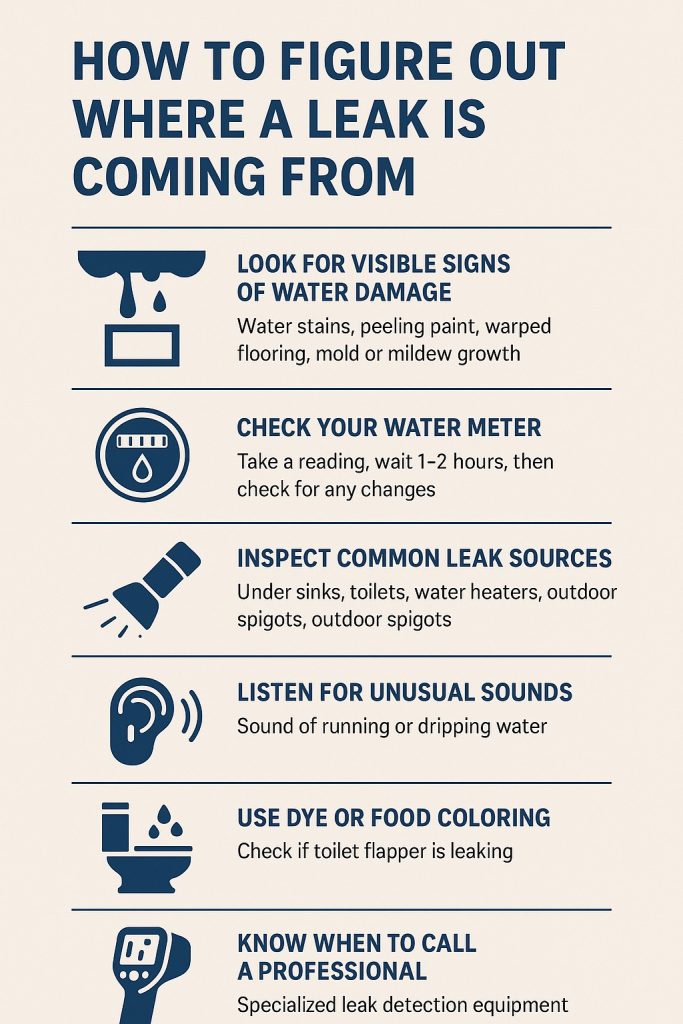
How to Figure Out Where a Leak Is Coming From
Water leaks can be one of the most frustrating problems for homeowners. Not only do they waste water and drive up utility bills, but they can also cause serious damage to walls, floors, and even your home’s foundation if left unchecked. The challenge is that leaks aren’t always obvious—you might see water pooling in one place, but the actual source could be somewhere else entirely.
At Leak Pro Leak Detection, we specialize in locating hidden leaks before they become expensive headaches. Here’s a step-by-step guide on how to figure out where a leak is coming from—and when to call in the professionals.
1. Look for Visible Signs of Water Damage
The first step in tracking down a leak is paying attention to what you can see:
Water stains on ceilings or walls
Peeling paint or wallpaper
Warped flooring or baseboards
Mold or mildew growth
If you notice these signs, the leak may be directly behind that surface—or water may have traveled from another location.
2. Check Your Water Meter
If you suspect a hidden leak, try this simple test:
Turn off all faucets, appliances, and water-using fixtures in your home.
Locate your water meter and take a reading.
Wait 1–2 hours (without using any water).
Check the meter again.
If the reading has changed, you likely have a leak somewhere in your plumbing system.
3. Inspect Common Leak Sources
Many household leaks start in predictable places. Be sure to check:
Under sinks and around faucets
Toilet bases and tanks
Water heater connections
Washing machine hoses
Outdoor spigots and irrigation lines
Sometimes, just a flashlight and a quick look under these areas can reveal a slow drip.
4. Listen for Unusual Sounds
Even if you can’t see water, you might be able to hear it. Put your ear close to walls, floors, or ceilings and listen for:
The sound of running water
Hissing noises near pipes
Dripping sounds in quiet rooms
These can point you toward the hidden source of the leak.
5. Use Dye or Food Coloring
A simple trick for checking toilet leaks:
Add a few drops of food coloring to the tank.
Wait 15–20 minutes without flushing.
If the color appears in the bowl, you’ve got a leaking flapper or seal.
6. Know When to Call a Professional
Some leaks are easy to spot, but many are hidden underground, behind walls, or beneath slabs. These require specialized leak detection equipment such as:
Acoustic listening devices
Thermal imaging cameras
Moisture meters
Pressure testing systems
At Leak Pro Leak Detection, we use advanced technology to pinpoint leaks with minimal disruption—saving you from unnecessary digging or drywall damage.
Protect Your Home Before It’s Too Late
Trying to track down a leak on your own can be stressful and time-consuming. Even small leaks can turn into major repairs if not addressed quickly. That’s why it’s smart to call in experts who can locate the problem fast and accurately.
If you suspect a leak in your home, don’t wait—contact Leak Pro Leak Detection today. We’ll help you figure out exactly where the water is coming from and provide solutions to keep your home safe and dry.

